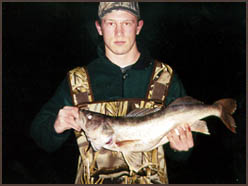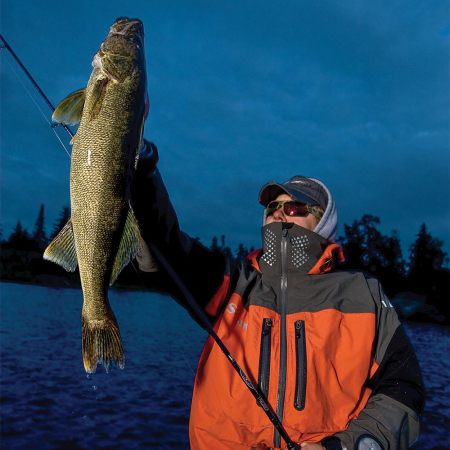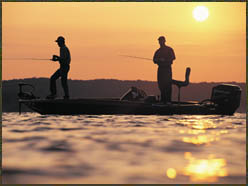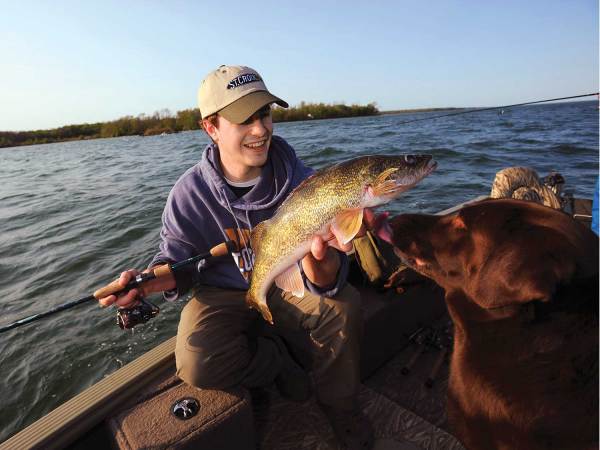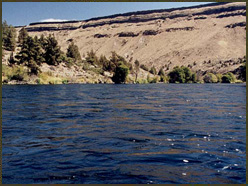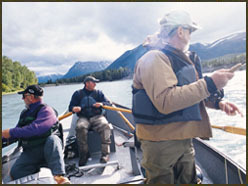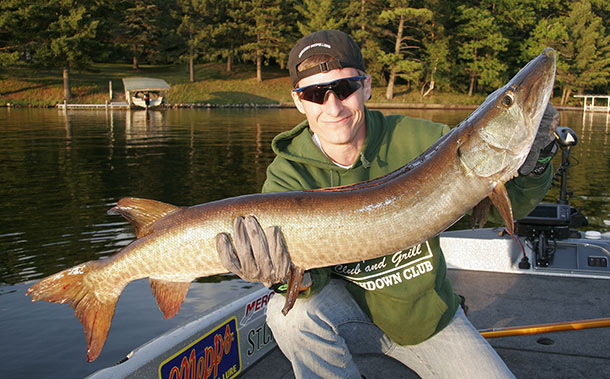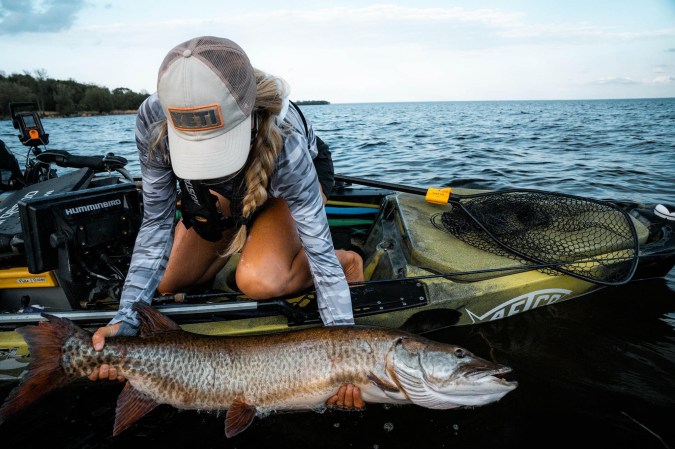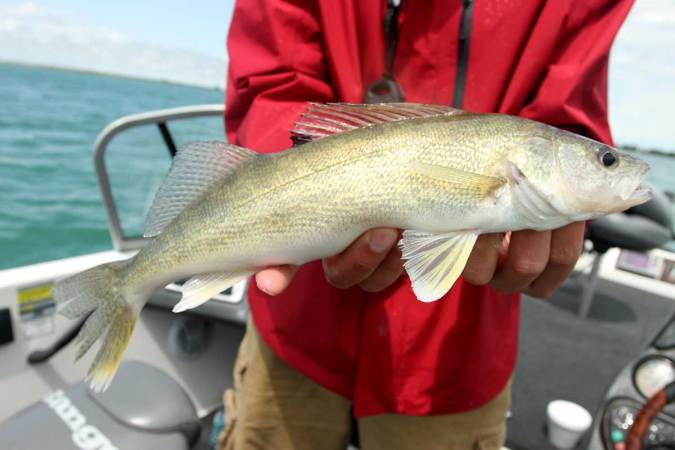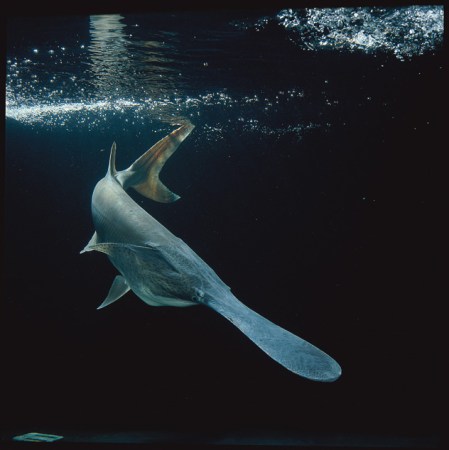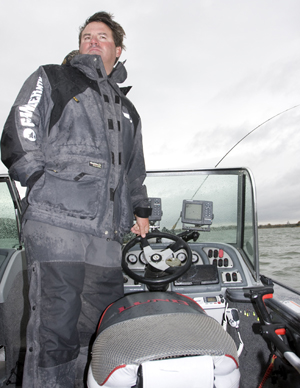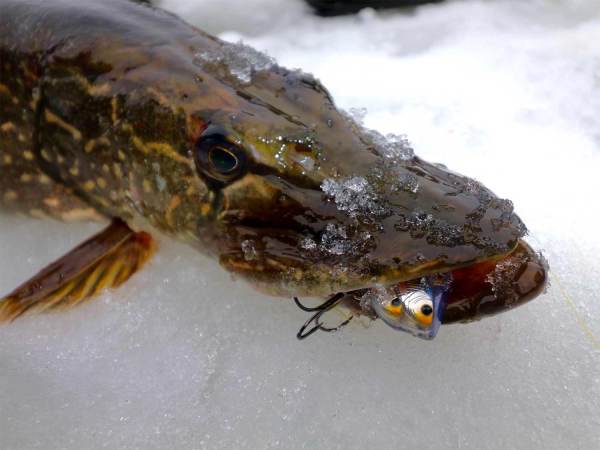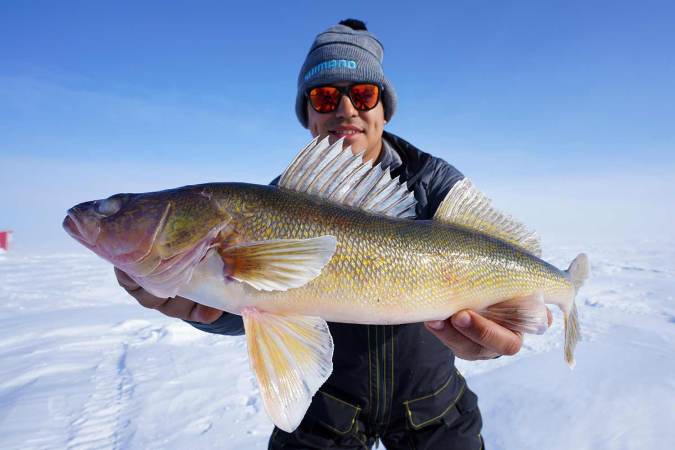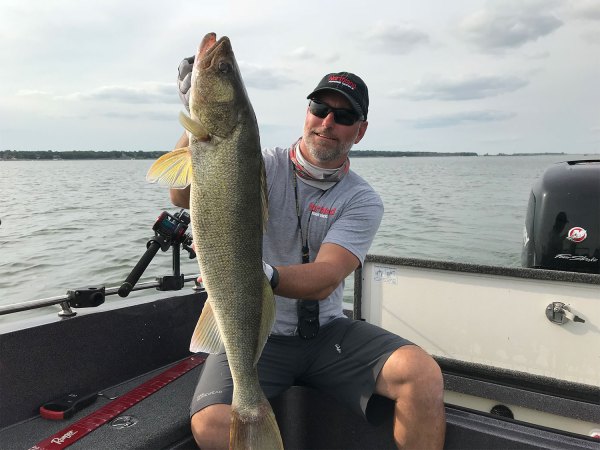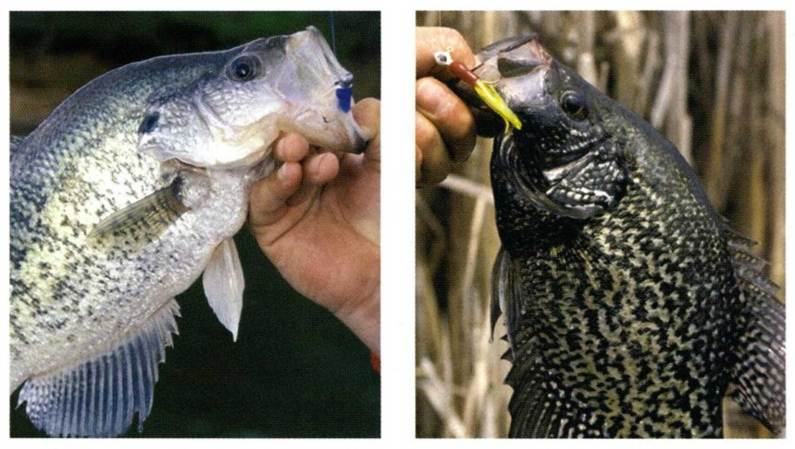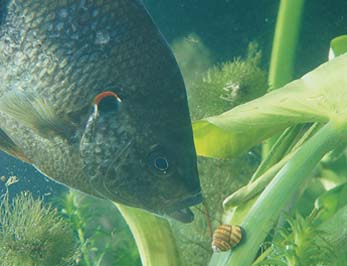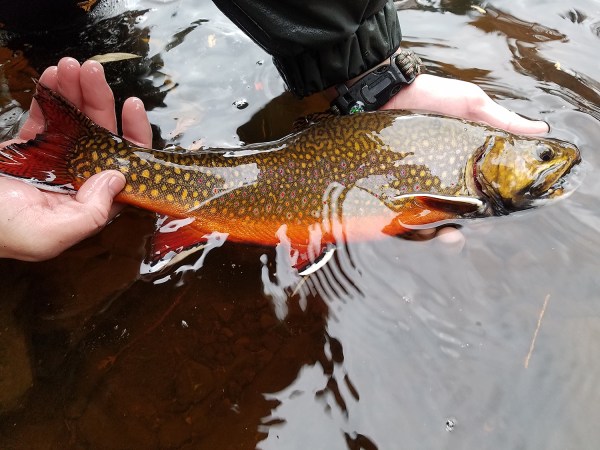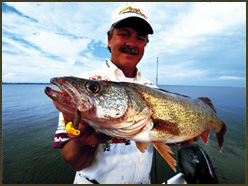Fishing for walleyes after they’ve spawned is a boom-or-bust proposition. In a year when conditions are just right, the post-spawn bite can be fabulous. After eating practically nothing during the spawning period, the fish are famished, as evidenced by their sunken bellies. The previous year’s baitfish hatch has been whittled down and the current year’s hatch has yet to occur, so food availability is at an annual low. On a good day, walleyes seem to be constantly on the prowl, and hit baits with gusto.
But when environmental factors are not in your favor, you’d swear your lake was fished out. What’s an angler to do?
Timing Is the Key
The problem is, walleyes bite like mad for a week or two before spawning, but once the spawn begins, the action comes to a sudden halt–the male fish have other things on their minds and the spawning act leaves the females in a weakened condition. The bite picks up again a couple of weeks after the spawn ends. If you happen to schedule your fishing trip during the “post-spawn recuperation period,” you might be choking down baloney sandwiches instead of walleye fillets.
It’s usually easy to learn when the walleyes spawned in a particular lake. Resorters, fish managers and bait-shop operators should be able to give you a pretty good idea. If their answers indicate that most spawning isn’t at least 10 days in the past, the best thing to do is look for another body of water where the timing is more favorable.
If nobody you speak to has a clue on timing of the spawn, ask when the ice went out. Most walleyes finish spawning within three weeks of the ice-out date. As a rule, walleyes spawn earlier in rivers than in lakes, in shallow lakes than in deep ones, in small lakes than in large ones and in low-clarity lakes than in clear ones. Latitude is a factor as well. All else being equal, spawning is delayed about one day for every 35 miles you go north in walleye country. So if you were planning to fish a deep, clear lake, but learned that the walleyes just finished spawning a few days earlier, consider trying a nearby river or a shallower, dingier lake in the same area. Otherwise, look for a lake a bit farther south.
Make the Best of It
Let’s say you’ve been invited to your buddy’s cabin for the weekend and are obligated to fish on his lake, even though conditions are not ideal. Here are some tips that will swing the odds in your favor:
Fish at night. Walleyes often hang around their shallow spawning areas for a week or more following the spawn, but they’re not likely to bite during the day, especially when the water is calm and clear and there’s a lot of boat traffic. Starting at dusk, try working the outer edges of a known spawning reef with a slip bobber and a leech. Or you can longline a minnowbait along a shallow shoal of sand and gravel. The action is usually fastest in the first hour of darkness, but the fish might bite sporadically through the night. Fish bait that walleyes can silhouette against the background, above their line of sight rather than below it.
If you’re not catching fish in the shallows, try deeper water. Many anglers do not realize that there is a turnover in spring as well as in fall, meaning that the water temperature is uniform from top to bottom. I’ve caught post-spawn walleyes during midday in water as deep as 40 feet. Later, when the lake stratifies into temperature layers once again, the fish most likely will be shallower.
Fish the windy shore. A windswept shoreline will almost always produce more post-spawn walleyes than a protected shoreline–for a lot of reasons. The wind blows in plankton, which attracts minnows and, in turn, walleyes. The wind also roils the water, reducing light penetration and allowing walleyes to feed in the darker environment they prefer. And, if the sun is shining, the wind piles up the warmer surface water along the downwind shore, activating the food chain from the bottom.
When the wind is howling, it’s easy to spot the good walleye anglers in the pack; they’re bouncing around in the rough water and catching fish. The novice anglers are working the lee shore or hiding behind a point where the water is calmer, wondering why the walleyes aren’t biting.
Look for isolated bays along the downwind shoreline. If the water is a few degrees warmer along the windy shore, it will be warmer yet if there is a bay or inside bend along the shoreline break to contain the warmer water and keep it from mixing with the adjacent water. I’ve seen water in a bay as much as 10 degrees warmer than nearby water in the open lake. If you’re fortunate enough to find this type of setup, you’re probably in for a real treat. Chances are good that the bay will be teeming with baitfish, walleyes and whatever other predatory fish the lake holds.
Try a different basin of the same lake. Many good walleye lakes have two or more separate basins connected by narrows. In terms of the timing of the spawn, each of these basins acts as a separate lake. Rather than trying to force a bite from walleyes that just completed spawning in the deep basin, try the shallow basin. There, the fish spawned several days earlier and will probably be much more cooperative.
When it comes to chasing post-spawn walleyes, there are no guarantees. A sudden cold snap can shut down ravenous feeders in only a few hours. And a warm south wind can swing the pendulum the other way just as quickly. But if you follow the rules outlined here, you can feed those cold baloney sandwiches to your dog.
[SIDE BAR]
Choosing a Walleye Net
Walleye anglers are known for their attention to detail in selecting fishing equipment, but few put much thought into choosing a landing net. If you’re still using that $3.99 special you bought five years ago, you should treat yourself to one of the new models. You’ll have a lot fewer headaches and will probably put more fish in the boat. Here are five features to look for when you go shopping for a walleye net:
1. A bag that’s shallow enough that the fish can’t roll and tangle in the mesh. If you’ve ever tried untangling a ball of mesh, fins and hooks at night, you know that it’s no fun.
2. Plastic-coated mesh. Hooks can’t penetrate it, as they often do in a net with a loose weave.
3. Mesh with openings measuring no more than 3/4 inch. If the mesh is any larger, the fish’s tail or fins may split when it thrashes around, possibly injuring a fish that you intend to release.
4. A hoop no more than 20 inches in diameter. Even a 10-pound-plus walleye will fit into a hoop of that size. A larger hoop makes the net unwieldy for boating most fish.
5. A long, collapsible handle. A long handle is great when the wind is blowing you away from the fish, but it takes up a lot of room. Use one with a push-button catch that allows the handle to collapse for easy storage.
My favorite walleye net, a Loki Model TLD-68SH, is one of the few nets I’ve seen that has all of the desired features. (About $40, Loki Nets, 865-687-7341, www.lokinets.com)
FISHING QUIZ ANSWERS
From page FB6
1. G-American eel; 2. F-Redear sunfish (or shellcracker); 3. A-White sturgeon; 4. H-Freshwater drum; 5. C-Rio Grande perch; 6. E-Striped bass; 7. B-Lamprey; 8. D-Catfish

